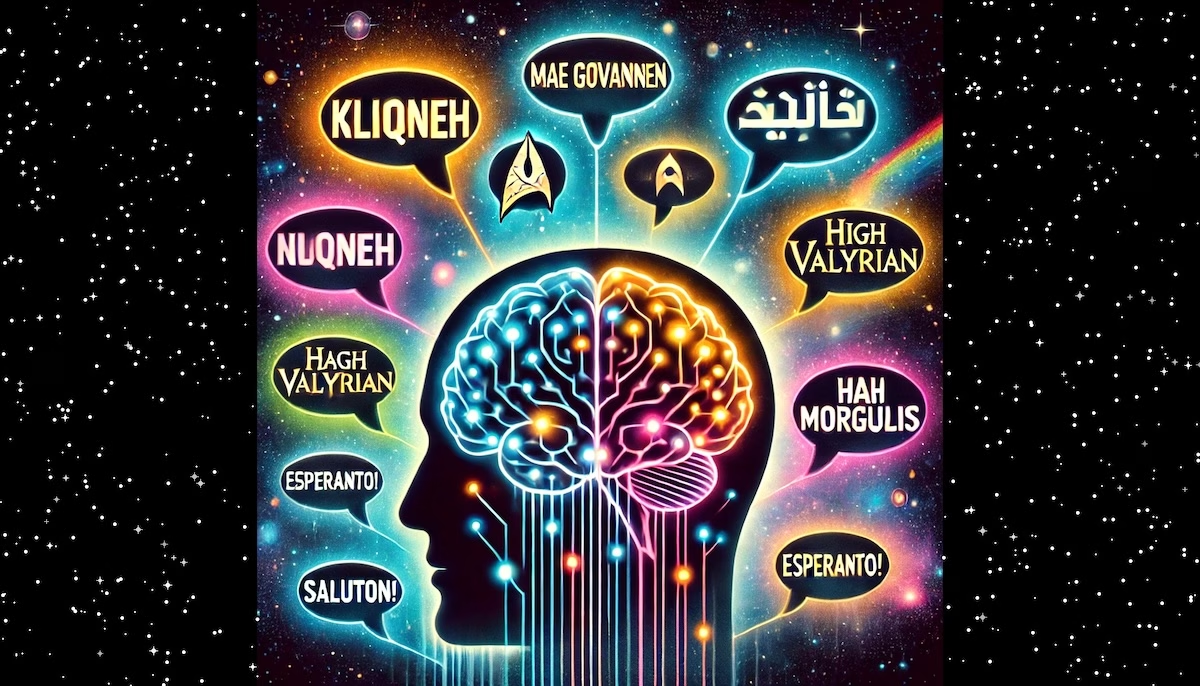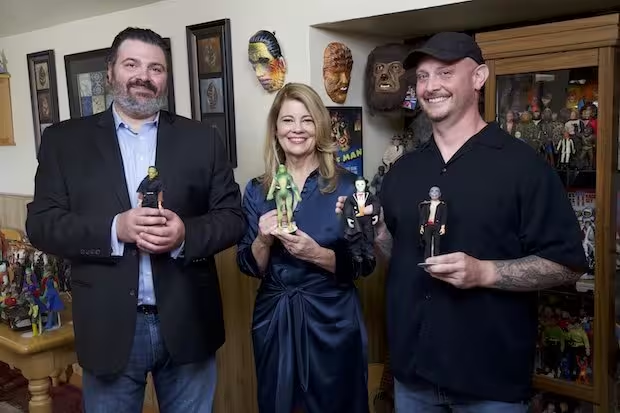New MIT study shows your brain processes sci-fi and fantasy languages just like real ones.
Think learning Klingon is just for hardcore Trekkies? Or that mastering High Valyrian is all fire and blood with no real-world application? Well, turns out your brain doesn’t see it that way.
A new study from researchers at MIT has boldly gone where few neuroscientists have gone before—into the minds of fans who speak constructed languages like Klingon, High Valyrian, Na’vi, and Esperanto. And the results are both fascinating and, dare we say, a little validating for every conlang-curious geek out there.
Your Brain Can Speak Geek
Whether you’re fluent in Mandarin, Spanish, or Dothraki, your brain’s language centers light up in the same way, according to the study recently published by MIT News.
The researchers used functional MRI (fMRI) scans on nearly 50 people proficient in various conlangs—short for “constructed languages”—to measure brain activity while they listened to sentences in their sci-fi or fantasy tongue of choice. The result? These made-up languages sparked the exact same language-processing regions in the brain as natural languages like English or Greek.
“We find that constructed languages very much recruit the same system as natural languages,” said senior author Evelina Fedorenko of MIT’s McGovern Institute for Brain Research. “The key feature seems to be the kinds of meanings these languages can express.”
So yes, when you’re having a deep conversation in Na’vi or telling someone to “nuqneH” (that’s “What do you want?” in Klingon), your brain treats it just like any other serious linguistic business.
From Esperanto to Westeros
The study’s participants weren’t just daydreaming about far-off galaxies or fantasy kingdoms—they were fluent in languages like:
- Esperanto, the OG conlang created in 1887 to promote global peace through shared speech.
- Klingon, the guttural and gloriously aggressive language from Star Trek, originally designed by linguist Marc Okrand.
- High Valyrian and Dothraki, the regal and nomadic tongues created by David J. Peterson for HBO’s Game of Thrones.
- Na’vi, the elegant language of the blue-skinned aliens in Avatar, developed by linguist Paul Frommer.
Many of these languages now have extensive resources, from textbooks to Duolingo courses, helping them evolve from Hollywood props to fully usable, richly expressive systems.
Sorry, Coders—Python Isn’t a Language (At Least to Your Brain)
This isn’t the first time MIT has looked at how artificial systems interact with our brain. In a previous study, the same research team found that computer programming languages like Python don’t activate the brain’s language centers at all. Instead, reading code triggers the multiple demand network—the brain’s go-to region for solving tough problems and doing mental gymnastics.
As MIT postdoc Saima Malik-Moraleda put it: “It helps us narrow down this question of what a language is, and do it empirically.”
Apparently, if your made-up language can talk about real things—people, feelings, dragons, spaceship parts—it earns full linguistic status in your brain. But if it’s just telling your laptop what to do, like a block of code? Not so much.
What About Elvish?
Curiously, while Tolkien’s Elvish languages like Quenya and Sindarin weren’t part of the MIT study, they deserve an honorable mention. Tolkien was famously obsessive in crafting realistic phonetics, grammar, and vocabulary for his Elvish tongues—so much so that modern fans still take up the challenge of learning to speak them fluently.
According to a Polygon feature on how to speak Elvish, Tolkien wrote the Lord of the Rings saga partly as a vehicle for the languages he invented. His love of philology ran so deep that Elvish wasn’t just decorative—it had cultural and poetic weight, much like natural languages.
Although Elvish wasn’t tested in the MIT study, it’s highly likely the brain would treat it similarly to Valyrian or Klingon. After all, when a language walks, talks, and sings like the real thing, your brain takes notice.
The Future of Fictional Fluency
This research opens up an exciting new frontier in understanding how the brain defines language—not by its origin or number of speakers, but by its ability to convey meaning. Even freshly-minted languages like Lojban (created in the 1990s to eliminate ambiguity) are on MIT’s radar for future studies.
In the meantime, whether you’re brushing up your Esperanto or trying to flirt in Dothraki, know that you’re not just geeking out—you’re activating the same neural magic that makes human communication possible.
So go ahead. Say Valar morghulis to your coworkers. Whisper tahed (hello) to your cat. You’re not just pretending. You’re speaking a real language. Your brain says so.
Want to Speak Like a Sci-Fi Show? Why Not Build Your Own Language?
If you’re a writer dreaming up new worlds, a filmmaker crafting a galaxy far, far away, or even a cosplayer trying to add depth to your character, here’s the wild truth: you can totally make your own language. And now we know your brain will treat it just as seriously as the real deal.
Constructed languages, or “conlangs,” aren’t just for big franchises like Star Trek and Game of Thrones. Anyone with a creative itch and a bit of linguistic curiosity can invent one. You don’t need a linguistics degree—just a good imagination and a few solid building blocks. According to Dabble Writer’s handy guide (read it here), it starts with figuring out your phonetics (how your language sounds), grammar rules (how sentences are built), and vocabulary (what words you need in your world). From there, you can shape dialects, slang, and even how your language evolves over time—just like real ones.
Over on WikiHow (step-by-step guide here), you’ll find tips on choosing symbols or writing systems, making your language culturally authentic, and—this is important—keeping it pronounceable (unless you want to sound like you’re coughing up a hairball à la Klingon).
Remember: conlangs aren’t just about sounding cool (though they definitely do). They can deepen your storytelling, add richness to your cosplay, or give your fictional civilizations that extra bit of magic and realism. If you’ve ever written a fantasy novel, run a D&D campaign, or scripted your own short film, building a fictional language might be the next level in your creative toolkit.
Who knows? The next time MIT scans someone’s brain, it could be lighting up for your made-up words.
Now that’s something worth saying Qapla’ to.




